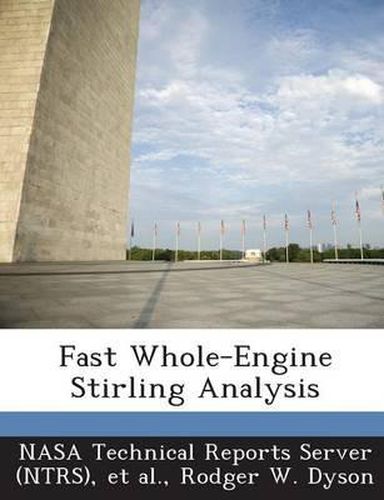Readings Newsletter
Become a Readings Member to make your shopping experience even easier.
Sign in or sign up for free!
You’re not far away from qualifying for FREE standard shipping within Australia
You’ve qualified for FREE standard shipping within Australia
The cart is loading…






An experimentally validated approach is described for fast axisymmetric Stirling engine simulations. These simulations include the entire displacer interior and demonstrate it is possible to model a complete engine cycle in less than an hour. The focus of this effort was to demonstrate it is possible to produce useful Stirling engine performance results in a time-frame short enough to impact design decisions. The combination of utilizing the latest 64-bit Opteron computer processors, fiber-optical Myrinet communications, dynamic meshing, and across zone partitioning has enabled solution times at least 240 times faster than previous attempts at simulating the axisymmetric Stirling engine. A comparison of the multidimensional results, calibrated one-dimensional results, and known experimental results is shown. This preliminary comparison demonstrates that axisymmetric simulations can be very accurate, but more work remains to improve the simulations through such means as modifying the thermal equilibrium regenerator models, adding fluid-structure interactions, including radiation effects, and incorporating mechanodynamics.
$9.00 standard shipping within Australia
FREE standard shipping within Australia for orders over $100.00
Express & International shipping calculated at checkout
An experimentally validated approach is described for fast axisymmetric Stirling engine simulations. These simulations include the entire displacer interior and demonstrate it is possible to model a complete engine cycle in less than an hour. The focus of this effort was to demonstrate it is possible to produce useful Stirling engine performance results in a time-frame short enough to impact design decisions. The combination of utilizing the latest 64-bit Opteron computer processors, fiber-optical Myrinet communications, dynamic meshing, and across zone partitioning has enabled solution times at least 240 times faster than previous attempts at simulating the axisymmetric Stirling engine. A comparison of the multidimensional results, calibrated one-dimensional results, and known experimental results is shown. This preliminary comparison demonstrates that axisymmetric simulations can be very accurate, but more work remains to improve the simulations through such means as modifying the thermal equilibrium regenerator models, adding fluid-structure interactions, including radiation effects, and incorporating mechanodynamics.